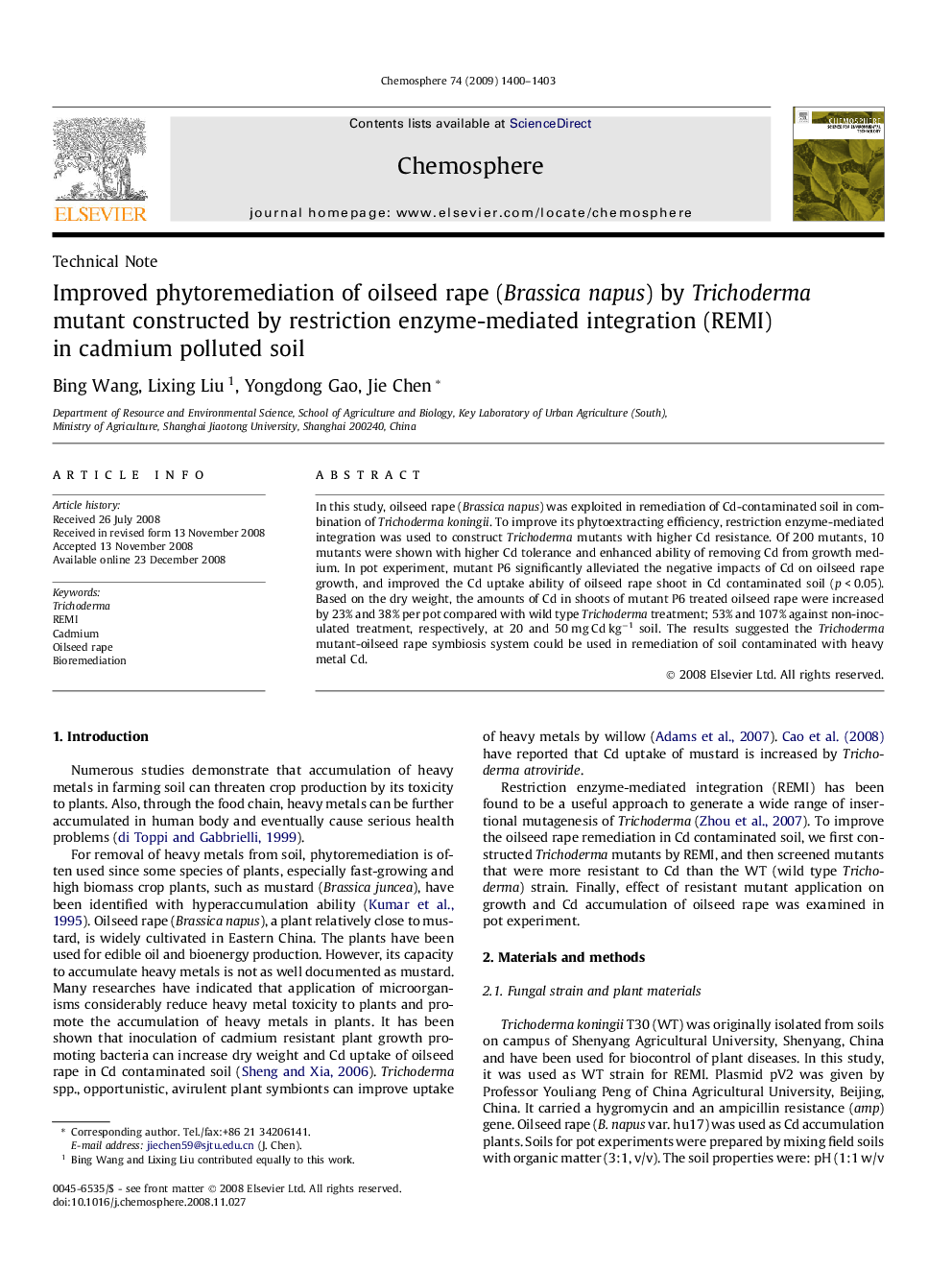| Article ID | Journal | Published Year | Pages | File Type |
|---|---|---|---|---|
| 4413201 | Chemosphere | 2009 | 4 Pages |
Abstract
In this study, oilseed rape (Brassica napus) was exploited in remediation of Cd-contaminated soil in combination of Trichoderma koningii. To improve its phytoextracting efficiency, restriction enzyme-mediated integration was used to construct Trichoderma mutants with higher Cd resistance. Of 200 mutants, 10 mutants were shown with higher Cd tolerance and enhanced ability of removing Cd from growth medium. In pot experiment, mutant P6 significantly alleviated the negative impacts of Cd on oilseed rape growth, and improved the Cd uptake ability of oilseed rape shoot in Cd contaminated soil (p < 0.05). Based on the dry weight, the amounts of Cd in shoots of mutant P6 treated oilseed rape were increased by 23% and 38% per pot compared with wild type Trichoderma treatment; 53% and 107% against non-inoculated treatment, respectively, at 20 and 50 mg Cd kgâ1 soil. The results suggested the Trichoderma mutant-oilseed rape symbiosis system could be used in remediation of soil contaminated with heavy metal Cd.
Related Topics
Life Sciences
Environmental Science
Environmental Chemistry
Authors
Bing Wang, Lixing Liu, Yongdong Gao, Jie Chen,
